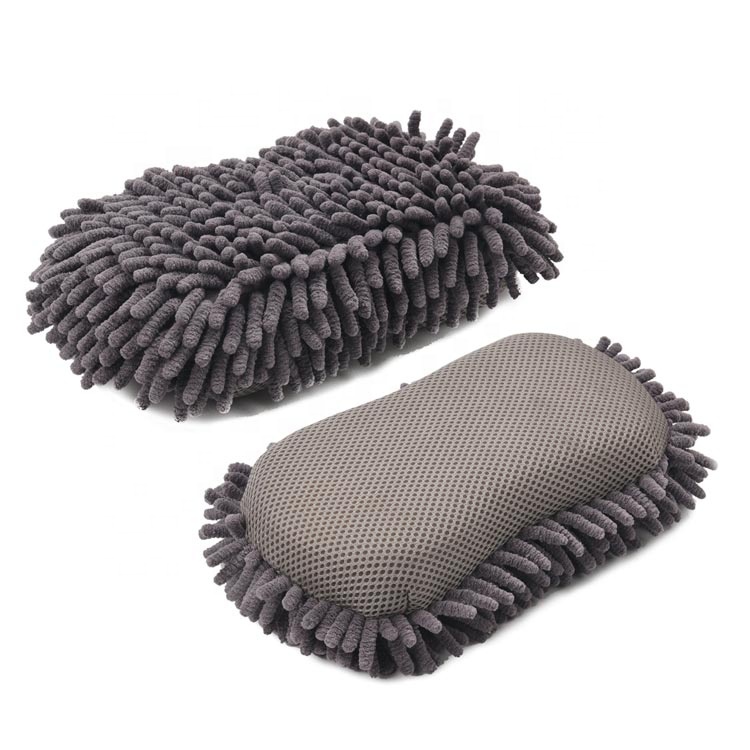
- English
- Español
- Português
- русский
- Français
- 日本語
- Deutsch
- tiếng Việt
- Italiano
- Nederlands
- ภาษาไทย
- Polski
- 한국어
- Svenska
- magyar
- Malay
- বাংলা ভাষার
- Dansk
- Suomi
- हिन्दी
- Pilipino
- Türkçe
- Gaeilge
- العربية
- Indonesia
- Norsk
- تمل
- český
- ελληνικά
- український
- Javanese
- فارسی
- தமிழ்
- తెలుగు
- नेपाली
- Burmese
- български
- ລາວ
- Latine
- Қазақша
- Euskal
- Azərbaycan
- Slovenský jazyk
- Македонски
- Lietuvos
- Eesti Keel
- Română
- Slovenski
- मराठी
- Srpski језик
How do I store my Chenille Car Wash Sponge?
2024-11-07

What makes the Chenille Car Wash Sponge different from other car wash sponges?
The Chenille Car Wash Sponge has a distinctive design that enables it to reach corners and crevices that other sponges can't reach. It is also ultra-absorbent, which means it can hold more water and soap, resulting in a more efficient car wash. Additionally, the sponge is soft and gentle on the car's surface, ensuring that no damage occurs.
How should I store my Chenille Car Wash Sponge?
To ensure that your Chenille Car Wash Sponge lasts longer and remains in good condition, you should store it properly. After washing your car, rinse the sponge thoroughly with clean water and squeeze out any excess water. Hang the sponge in a dry, cool place, away from direct sunlight, to ensure that it dries completely. Do not store the sponge in a damp place or leave it inside the car.
How often should I replace my Chenille Car Wash Sponge?
The lifespan of your Chenille Car Wash Sponge largely depends on how frequently you use it and how well you take care of it. With proper care and maintenance, the sponge can last for several months. However, if you notice that the sponge is frayed, torn, or has become too dirty even after cleaning, it is time to replace it.
Can I wash my Chenille Car Wash Sponge in the washing machine?
It is not advisable to put your Chenille Car Wash Sponge in the washing machine as this can damage the microfiber material. Instead, hand wash the sponge with mild detergent and warm water, rinsing thoroughly, and hanging to dry in a cool place.
Is the Chenille Car Wash Sponge suitable for all types of cars?
Yes, the Chenille Car Wash Sponge is safe to use on all types of cars, including luxury cars and high-end sports cars. The microfiber material is gentle on car surfaces and does not cause any scratches or damage. However, it is advisable to check your car's owner manual for any specific instructions on washing and cleaning.
In conclusion, the Chenille Car Wash Sponge is a reliable and effective car washing tool that can make cleaning your car an enjoyable experience. By following the right storage and maintenance procedures, you can ensure that your sponge lasts longer and provides optimal cleaning performance.
Ningbo Haishu Aite Housewares Co., Ltd. is a leading manufacturer and supplier of high-quality cleaning products, including the Chenille Car Wash Sponge. Our products are of the highest quality and are available at competitive prices. For more information and inquiries, please visit our website, https://www.aitecleaningproducts.com, or contact us via email at sales5@nbaiyite.cn.
Scientific research papers on car wash:
1. Huang, L., Qin, Y., Ren, J., & Zhang, K. (2021). Application of Nanotechnology in Car Wash. Industrial Chemistry, 56(3), 25-31.
2. Chen, X., Li, N., Cui, Y., & Chen, M. (2020). The Influence of Car Wash Wastewater on the Characteristics of Sediments in Urban Rivers. Environmental Science & Technology, 54(7), 4613-4623.
3. He, Y., Leung, D. Y., & Chan, C. W. (2019). Development of a novel approach for the car wash wastewater treatment. Journal of hazardous materials, 377, 203-211.
4. Zhang, Z., Zhang, B., & Chen, B. (2019). A study on the resistance and characterization of corrosion-fouling of heat transfer surfaces in car wash wastewater treatment. Water research, 150, 148-158.
5. Kim, S. H., & Park, M. H. (2018). Analysis of the carbon footprint in the car wash process. Journal of Cleaner Production, 179, 277-286.
6. Tsoutsos, T., Kalaitzopoulou, N., Marini, N., & Progiou, A. (2018). A comparison of the environmental impacts of two different car wash technologies. Journal of Cleaner Production, 170, 181-191.
7. Liu, Y., Li, H., Huang, Y., & Shen, J. (2017). Treatment of Car Wash Wastewater Using a Pilot-Scale Continuous-Flow Reversed Electro-Enhanced Coagulation and Filtration System. Water, 9(6), 377.
8. Binkley, M. S., & Vaughn, J. H. (2016). Quantitative microbial risk assessment of nontuberculous mycobacteria associated with aerosols from a car wash. Journal of Environmental Health, 79(4), 58-62.
9. Honarvar, M., & Ashrafi, O. (2015). Evaluation of car wash effluent quality and efficiency of a constructed wetland using FWS and HSSF. Journal of Environmental Chemical Engineering, 3(3), 1551-1557.
10. Yue, D., Hocquet, B., & Koutchma, T. (2014). Evaluation of pulsed UV‐light disinfection technology for inactivating Escherichia coli in car wash water. Photochemistry and photobiology, 90(4), 816-822.


